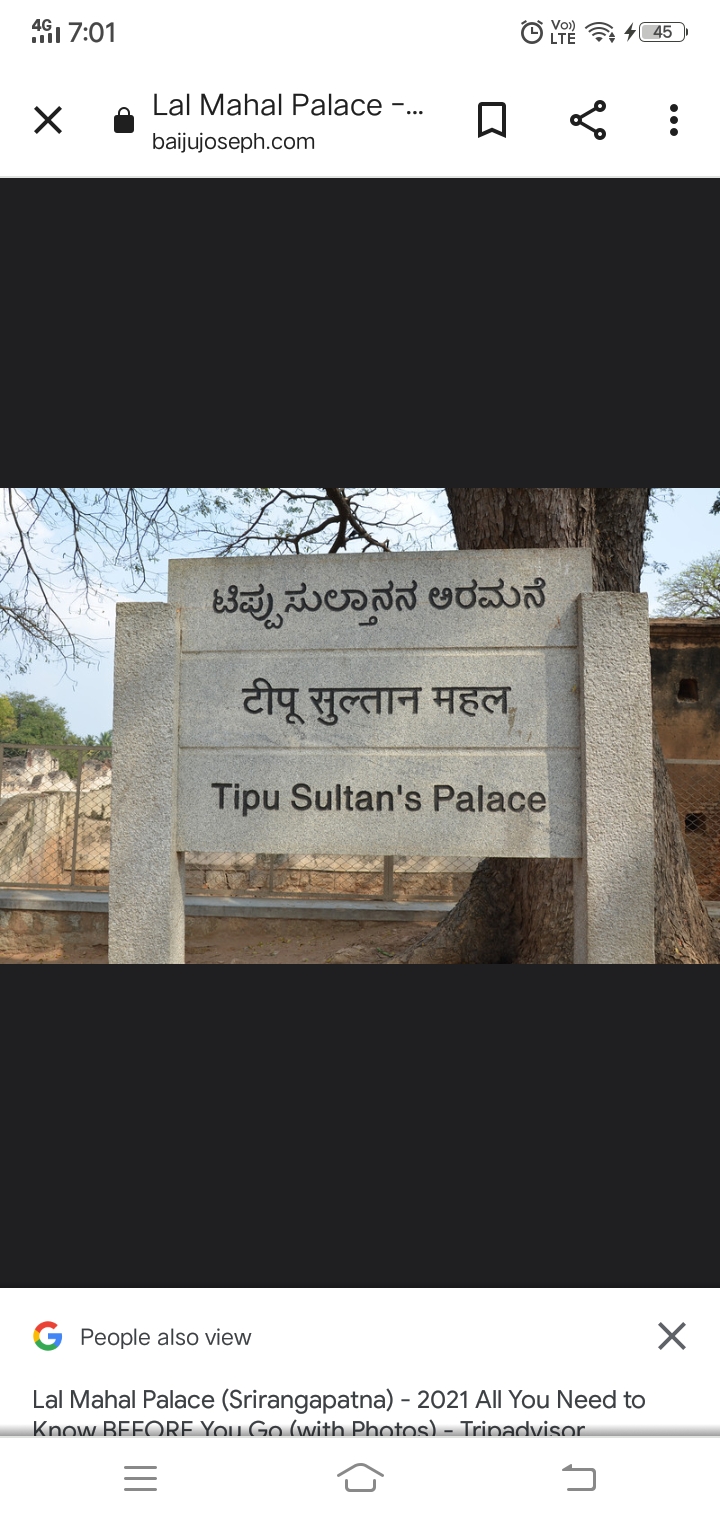

Lal Mahal Palace (Tipu Sultan Palace) of Tipu Sultan (November 1750, Devanahalli – 4 May 1799, Seringapatam), also known as the Tiger of Mysore, was the de facto ruler of the Kingdom of Mysore. He was the son of Hyder Ali, at that time an officer in the Mysorean army, and his second wife, Fatima or Fakhr-un-Nissa. He was given a number of honorific titles, and was referred to as Sultan Fateh Ali Khan Shahab, Tipu Saheb, Bahadur Khan Tipu Sultan or Fatih Ali Khan Tipu Sultan Bahadur. During Tipu's childhood, his father rose to take power in Mysore, and Tipu took over rule of the kingdom upon his father's death. In addition to his role as ruler, he was a scholar, soldier, and poet. He was a devout Muslim but the majority of his subjects were Hindus. At the request of the French, he built a church, the first in Mysore. He was proficient in many languages. In alliance with the French in their struggle with the British, and in Mysore's struggles with other surrounding powers, both Tipu Sultan and Hyder Ali used their French trained army against the Marathas, Sira, rulers of Malabar, Coorg, Bednur, Carnatic, and Travancore. He won important victories against the British in the Second Anglo-Mysore War, and negotiated the 1784 Treaty of Mangalore with them after his father died the previous year.Tipu Sultan, the eldest son of Haider Ali, was born on December 10, 1750 at Devanhalli. Right from his early years he was trained in the art of warfare and at the age of 15 he used to accompany his father Haider Ali, the ruler of Mysore, to different military campaigns. In Addition, he also learnt different languages, mathematics and science. Tipu Sultan had a fascination for learning. His personal library consisted of more than 2,000 books in different languages. He was an extremely active man and worked hard for the welfare of his subjects. He took over the kingdom of Mysore after the death of his father in 1782, who died of a carbuncle in the midst of a campaign against the British. He continued fighting the British and defeated them in 1783.The main deity at the famous Guruvayur Temple had to be shifted to Ambalapuzha due to the imminent attack from Tipu's forces. The King of Kozhikode (Samudiri/Zamorin) committed suicide in his palace to avoid capture by Tipu. Members of the royal family of Chirakkal were deported to Mysore. There were large scale migration of people to the kingdom of Travancore, fearing persecution. In fact, historically the region south of the Tungabhadra river was relatively immune to the great ravages and plunder from attacking armies unlike those in the Northern parts of India. The only two exception to the aforementioned were the acts of Hyder Ali/ Tipu Sultan in Malabar- Kodagu- South Kanara regions and the sacking and destruction of Vijayanagara.. In that heady period, the state ruled by Tipu extended its frontiers in every direction, encompassing a major portion of South India. Srirangapattana flourished as the cosmopolitan capital of this powerful state. Various Indo-Islamic monuments that dot the town, such as Tipu Sultan's palaces, the Darya Daulat and the Jumma Maseedi (Friday congregational mosque), date from this period.